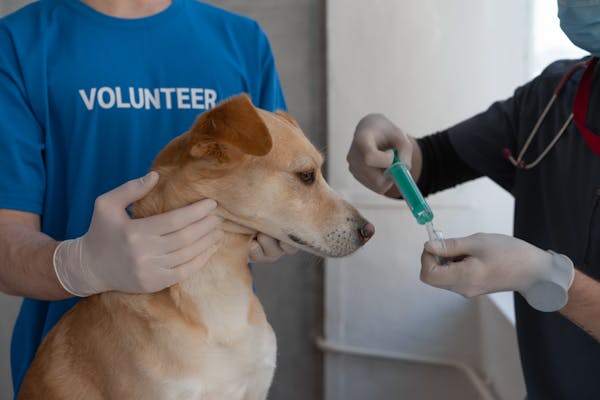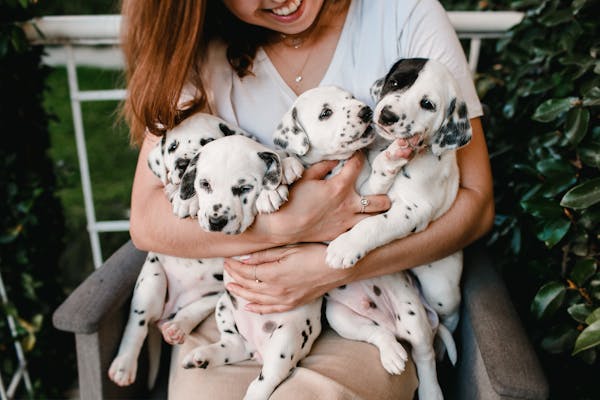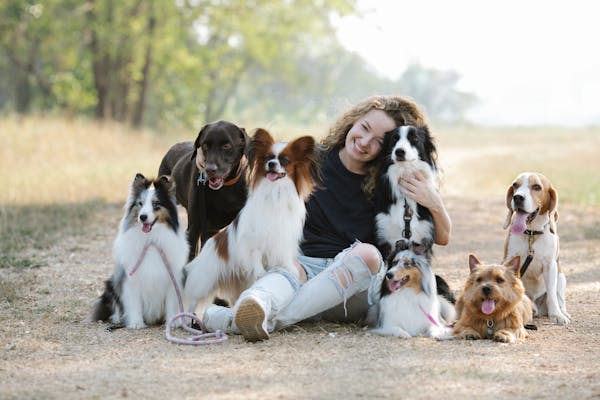Dog Breeding for Beginners:
Breeding dogs is a rewarding yet complex endeavor that requires dedication, knowledge, and ethical consideration. For beginners, it’s essential to understand that responsible breeding is about improving the breed and ensuring the health and well-being of both the mother and her puppies. This guide covers the basics of dog breeding for beginners, from choosing the right breeding pairs to caring for puppies and finding them good homes.
Step 1: Researching and Choosing the Right Breeding Pairs

Selecting the right breeding pairs is crucial for producing healthy, well-tempered puppies. Start by researching your chosen breed’s characteristics, common health issues, and breed standards. Ideal breeding pairs should have good health, stable temperaments, and meet the breed’s physical and behavioral standards.
Before breeding, ensure both dogs are registered with a reputable kennel club or breed organization, if possible. Working with dogs that meet breed standards helps maintain the breed’s integrity. Furthermore, understanding the dog’s lineage can prevent inbreeding and avoid genetic complications.
Step 2: Understanding Health and Genetic Testing:

Health testing is essential to produce puppies free from preventable genetic disorders. Each breed has specific health screenings that help reduce the risk of hereditary issues. Common tests include:
- Hip and Elbow Dysplasia: Common in larger breeds, this screening assesses joint health.
- Eye Examinations: Many breeds are prone to eye disorders, so annual checks help catch issues early.
- Heart Testing: Some breeds are susceptible to heart disease, making heart testing crucial.
- DNA Tests: These can identify genetic carriers of certain disorders, ensuring that affected dogs are not bred.
Both dogs in the breeding pair should be free from serious genetic disorders and pass routine health checks. This step ensures that you’re breeding responsibly and minimizing potential health risks in the puppies.
Step 3: Preparing for Breeding and the Mating Process
To begin the breeding process, it’s essential to understand the female dog’s estrus cycle. The estrus cycle, also known as “heat,” is when the female is receptive to mating, and it typically occurs every six to twelve months. Key stages of the cycle include:
- Proestrus: Swelling and discharge begin; the female is not yet receptive.
- Estrus: The female is receptive to mating, often lasting 5–10 days.
- Diestrus: The female is no longer receptive.
For successful breeding, aim to mate the dogs during the estrus stage, when ovulation occurs. Ideally, you should work with an experienced veterinarian to confirm the timing and health of both dogs. Create a safe, calm environment for the dogs during mating to minimize stress.
Step 4: Preparing for Whelping (Dog Labor):
Whelping, or the birthing process, requires a safe, comfortable space. About 63 days after mating, the mother will be ready to give birth. Create a “whelping box” in a quiet area of your home where the mother feels secure. The box should have:
- Warm Bedding: Newborns need a warm, clean area, as they cannot regulate their body temperature.
- Space: Ensure the box is large enough for the mother to lie comfortably while also allowing her puppies to nurse.
- Easy Access: The box should allow you to monitor the mother and pups without disturbing them too much.
Learn the signs of labor, which include restlessness, nesting behavior, and sometimes a decrease in appetite. Have a veterinarian on standby if complications arise.
Step 5: Puppy Care and Socialization:

Once the puppies are born, they’ll require close attention to ensure healthy growth. Here are the essentials of newborn puppy care:
- Feeding: Puppies rely on their mother’s milk for the first few weeks. If the mother is unable to nurse, consult a vet for suitable puppy formula.
- Monitoring Health: Watch for signs of health issues, such as respiratory problems, weight loss, or dehydration. Regular veterinary checkups are essential.
- Temperature Control: Keep the whelping area warm (around 85°F initially), as puppies are vulnerable to cold.
- Handling and Socialization: Begin gently handling the puppies after the first two weeks to encourage socialization. Introduce them to various sights, sounds, and people to help develop confidence and reduce future anxiety.
Socialization is crucial as puppies grow. It helps them develop into well-adjusted, friendly adults. Start slow, gradually exposing them to new experiences while ensuring they feel safe and secure.
Step 6: Finding Responsible Homes for Puppies:

As the puppies reach 8–12 weeks of age, they’ll be ready for new homes. Finding responsible owners ensures a happy, healthy future for each puppy. Here are steps to find the right homes:
- Screen Potential Owners: Ask questions to gauge each prospective owner’s experience, lifestyle, and commitment to the dog’s long-term care.
- Set Up a Contract: Establish clear terms about the puppy’s health, vaccinations, and any agreements on spaying or neutering.
- Prepare Care Information: Provide new owners with information on caring for their puppy, including feeding schedules, vaccination records, and training tips.
Finding homes for puppies requires patience and careful vetting. Aim to place them with owners who can provide a stable, loving environment and are committed to the breed.
Breeding dogs responsibly requires dedication to improving the breed, a focus on health and temperament, and a commitment to the well-being of both the mother and her puppies. By following these essential steps—from selecting healthy breeding pairs to caring for puppies and finding them responsible homes—you can make the breeding experience a positive one for both you and your dogs. Ethical breeding practices help ensure that each puppy has a great start in life, and your role as a responsible breeder will contribute to the overall well-being of the breed.
